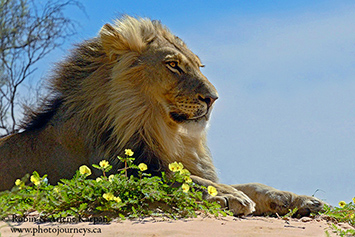
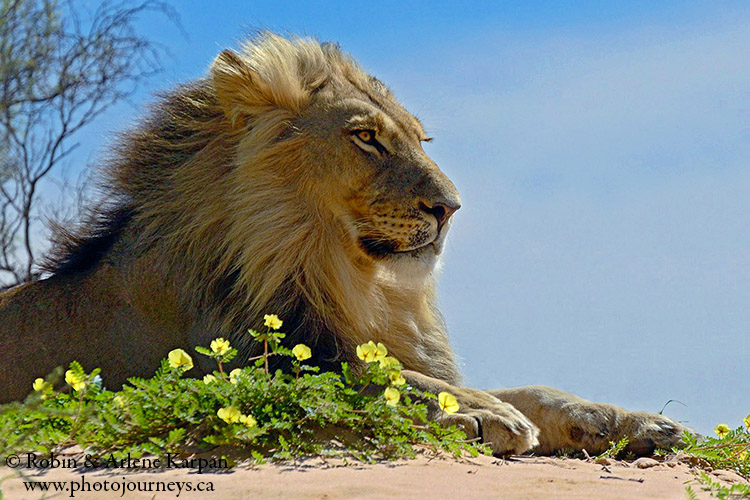
We’re here for an adventure, but it turns out to be more of an adventure than we had bargained for. We start with a long drive from Johannesburg to the Kalahari Desert’s most wildlife-rich region – Kgalagadi Transfrontier Park, straddling the border of South Africa and Botswana.
As in many wildlife parks in South Africa, you can do a self-drive wildlife safari, exploring in your vehicle and staying at rest camps that dot the park. Though the experience here is kicked up a notch; it’s more remote, wilder, with fewer people and fewer services, and roads so rough that we thought our car would disintegrate.
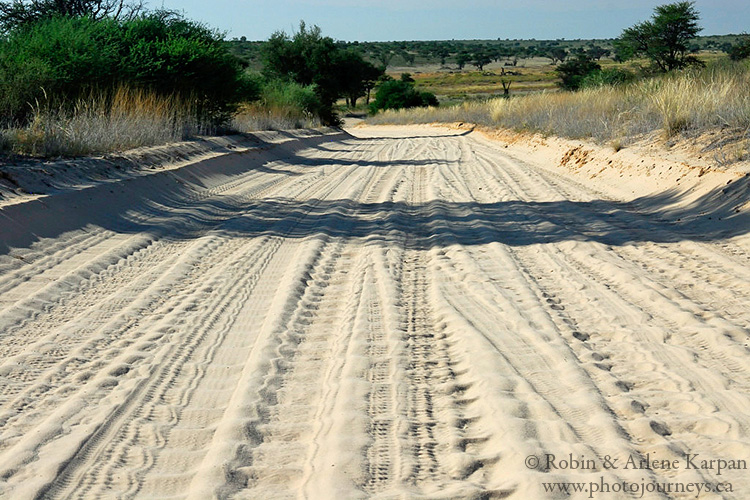
The Great Thirstland
Known as the Great Thirstland, it’s a stark though beautiful expanse of red sand and thickets, with patches of greenery along river valleys. Well…sort of rivers. The Auob and Nossob River valleys run through the park, the latter marking the border between the two countries. These ephemeral waterways only contain water every 25–100 years. Yet there’s enough moisture for grasses and a variety of other plants and shrubs.
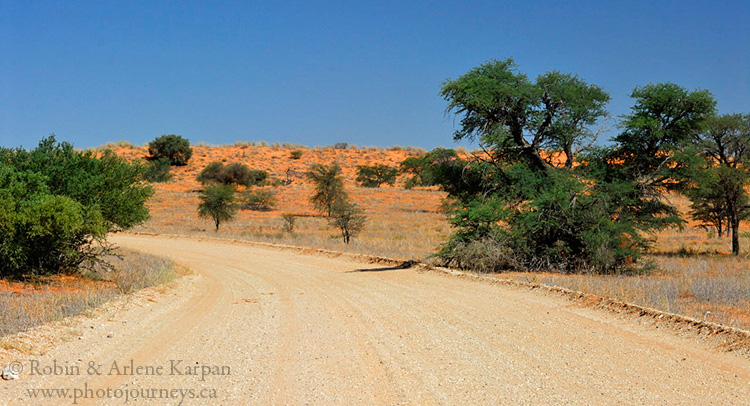
While trees are not plentiful, the valleys boast magnificent stands of acacia trees, also known as camelthorn, some growing over 15 metres tall. The trees are favourite haunts of leopards that sometimes rest in the shade on branches high in the canopy, or stash their prey out of reach of scavengers. Giraffes devour the delicious leaves, deftly curling their tongues around the barbwire thorns.
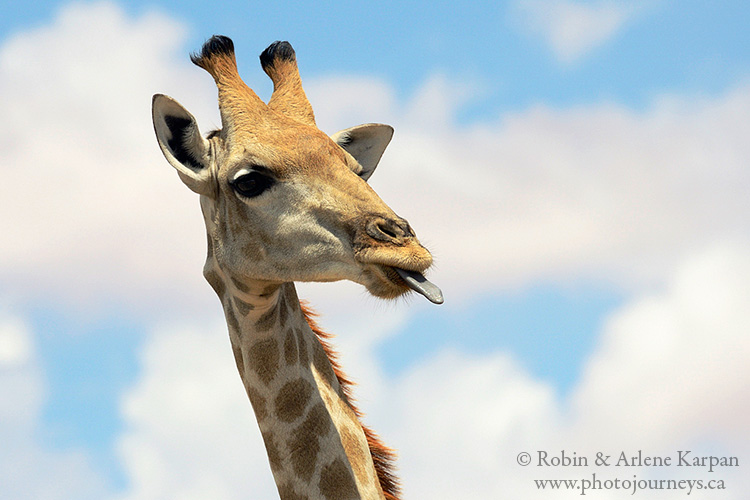
A Wildlife Bonanza
We’re immediately struck by how much wildlife thrives in this thirsty land. Most obvious are the large herds of springbok – slender, beautiful tan and white antelope only found in the arid westerly parts of southern Africa. Adapted to the dry conditions, they can go without water if it is not available, surviving on the moisture in plants they eat. Springbok have the ability to jump or “pronk” when running – a stiff-legged bounce, as if their legs are spring-loaded, carrying them as much as four metres in a single bound. Pronking is a tactic often used to evade predators, but we watch several young calves pronk for no apparent reason, probably just for fun, and just because they can.
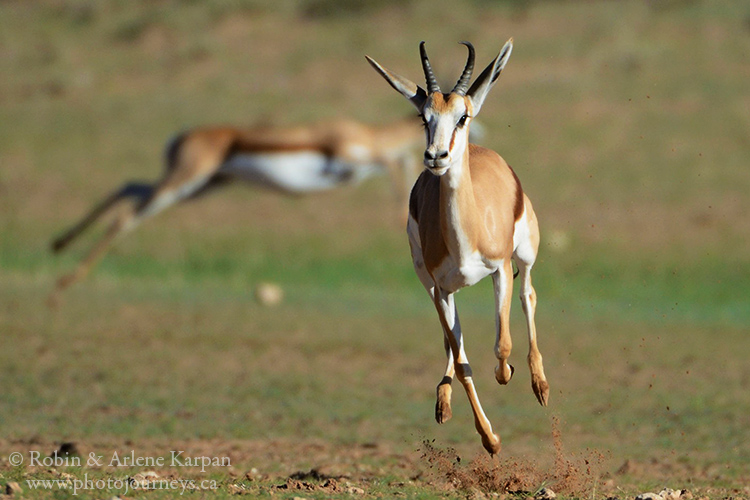

Down the road, a herd of blue wildebeest come to a water hole to drink. An outsider bull tries to intrude, causing the resident bull to immediately charge. The ensuing battle is both ferocious and prolonged since the two bulls appear evenly matched. At times we can barely make out the clash of horns and twisting bodies in the flying dust; finally the interloper gives up.

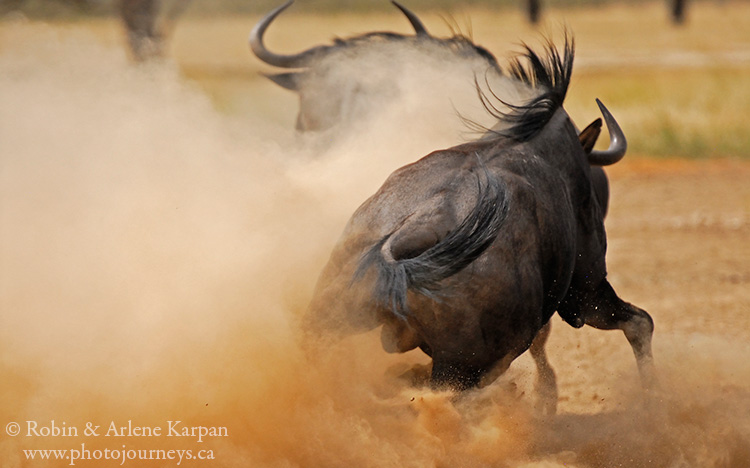
This is the trip for battles; a few days later we come across two male red hartebeest having a serious disagreement. These stately, red-coloured antelope look completely at home as they blend into the red dunes. First, the two males chase each other at top speed, then ram head-on with such force that they both collapse on their front knees. One time when they lock horns, they are not only figuratively, but physically locked; they twist and turn wildly, trying to untangle their corkscrew-like horns, an effort that leaves them both exhausted in the stifling afternoon heat.
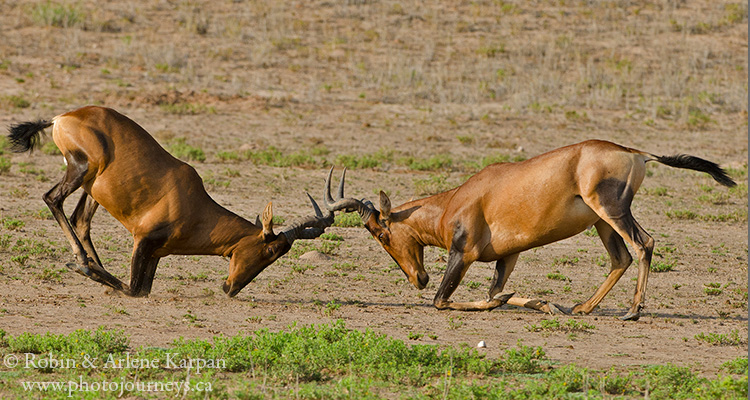
The gemsbok, or oryx, is the most famous and stately antelope of the Kalahari, sporting straight, super-sharp horns stretching up to a metre long. These not only provide protection against predators, but males also use them when defending territory from competitors. As a bonus, they come in handy when you need to scratch your rear end. Lions often prey on gemsbok, although it’s never an easy fight; there have been cases of gemsbok stabbing lions with their rapier-like horns.
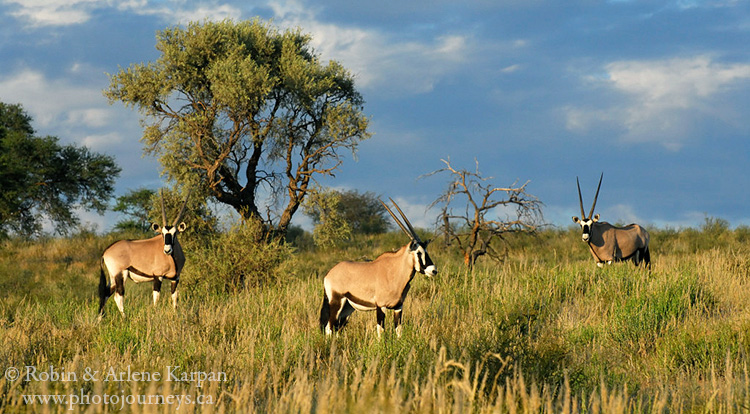
The many smaller critters are just as entertaining – ubiquitous mongoose, bat-eared foxes with satellite dishes for ears, or ground squirrels with bushy tails so huge that they fold them over their heads for shade from the hot sun. Our favourite is the meerkat, a true Kalahari specialist. When meerkats leave their dens to feed, they post guards that stand up like they’re on their tiptoes. The sentries appear perpetually nervous as they watch for predators, continuously turning their heads one way then the other and scanning the sky.

Cats of the Kalahari
But the wildlife highlight is the Kalahari’s big cats. The black-maned male lions of Kgalagadi are among the largest in Africa. We find them in different situations – at water holes, sleeping in the shade, trying to climb trees, and couples mating.
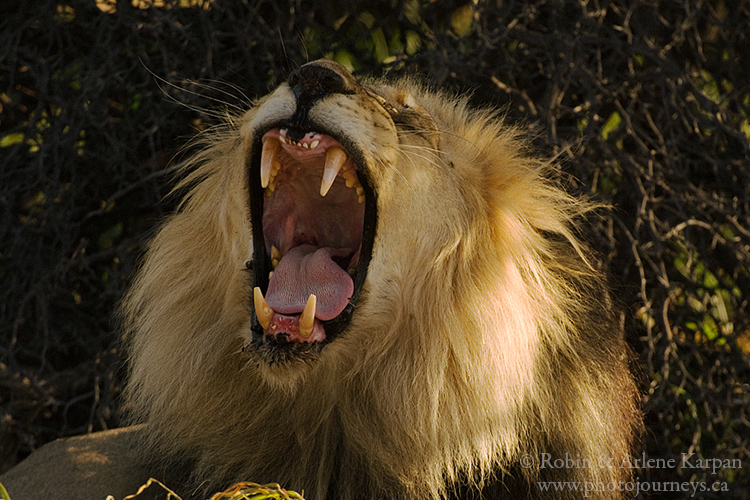
Lions go where they please when they please. We come across a water hole where four lions are drinking. We not only have a prime vantage point for photography, but also the luxury of parking under a wide camelthorn tree, the only shade anywhere nearby. After drinking and grooming by the water hole, the lions walk straight toward us. At first, we wonder what’s happening. Are they curious? Do they want to chase us away? Soon it becomes clear that they could care less about us. It’s the shade they want, as they settle down for a snooze.
Another time at the same water hole, a lioness brings her two young cubs to the shady spot, despite a half dozen cars being there as well. The cubs play but stay close to their mother, who doesn’t seem to pay any attention to the cars and clicking cameras.
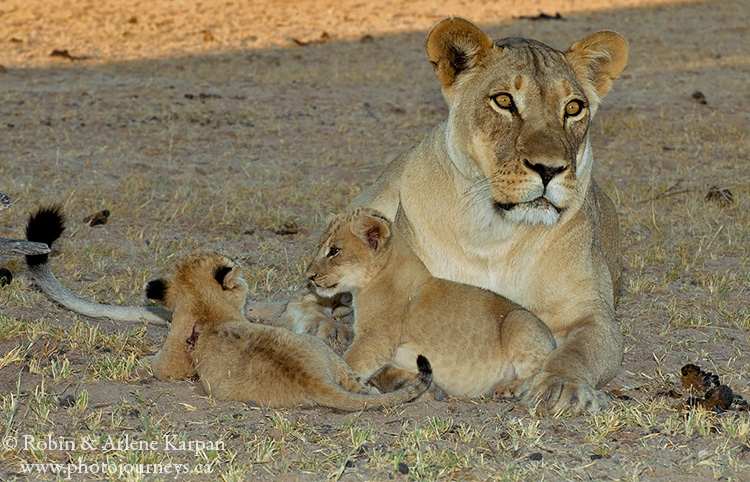
One morning as we pass a large camelthorn tree immediately beside the road, we suddenly catch a glimpse of movement high in the branches. We stop for a better look. Moments later an adult leopard emerges from the thick foliage and stretches out along a protruding branch, practically posing for us. It looks around, appears bored, then effortlessly leaps higher into the canopy to sleep in the shade. The leopard is so well hidden that all we can see is the tip of its drooping tail.
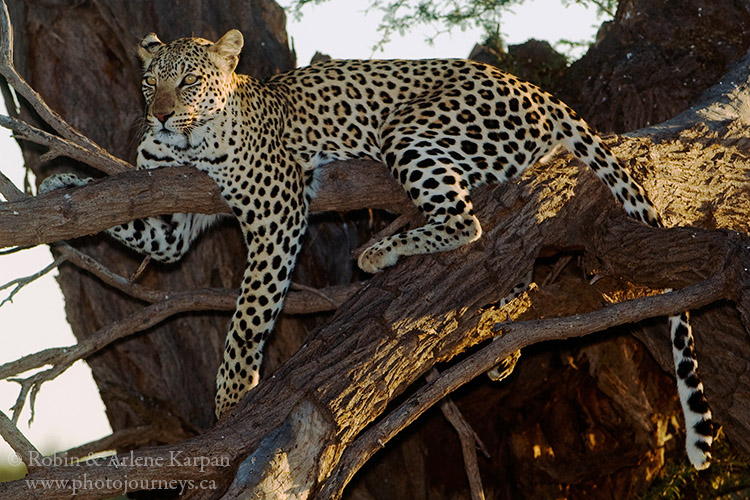
In late afternoon we pass the same tree again on the way back to camp. Little has changed. As before, all we see is the tip of the tail, and only because we know where to look. For most of that day, people would have driven by, completely unaware that a leopard was lurking almost directly above them.
Cheetah Country
The Auob River Valley is among the top places in Africa to find cheetahs. On an early-morning drive, we approach a water hole and spot movement in the shrubs right beside the road. It’s a cheetah struggling to pull a springbok it had just killed into the shade of a tree. Unlike lions and leopards, cheetahs don’t have the power to move their prey far, so they usually have to eat it on the spot. Barely stopping to catch her breath, this cat gulps down all she can, occasionally quickly glancing around, her face dripping with blood.

Jackals soon arrive on the scene, circling and waiting to close in. We’re sitting in our car no more than five metres away, the cheetah paying us no heed. Eventually she is satiated and leaves – the cue for the jackals to move in. They snatch bits of food and dash away in case the cheetah returns. What jackals don’t grab, vultures and hyenas will soon clean up. In the desert, nothing goes to waste.
We keep running into Ben and Anita, a couple from South Africa’s Limpopo province, who are travelling much the same route as we are.
One morning as we’re leaving for the day, they invite us to come to their campsite for a drink around 7:00 that evening. We wander over, find their campsite, but there’s no one around, not even their car. Something is obviously wrong. It’s past gate closing time when everyone has to be back in the rest camp. If you’re out later and don’t have a compelling reason, you can be fined.
Next day we hear their story. They stopped at a kill site right beside the road where cheetahs were feasting on a springbok. But when they finished taking photos and were ready to move on, their car wouldn’t start. Getting out to check under the hood didn’t seem like a good idea with cheetahs so close. Eventually, another car came by, so Anita got a ride back to the rest camp to find help.

Two men from the park arrived, and found it was an easy fix. The rough jarring roads had caused a battery cable to come off. The cheetahs didn’t faze the two guys who simply got out of the truck, waved their arms in the air, and yelled “shoo, shoo” at the lounging cats, which quickly ran off.
“But never, ever try that with leopards or lions,” they warned.
The Rains Down in Africa
It doesn’t rain a lot in the Kalahari, but when it does, it’s often accompanied by dramatic thunderstorms. We see a lot of dry thunderstorms with billowing dark clouds and plenty of lightning, but no moisture. One evening, we sit outside and watch the light show for hours. Most intriguing is lightning that stays within a cloud, illuminating the entire cloud as if it’s on fire.
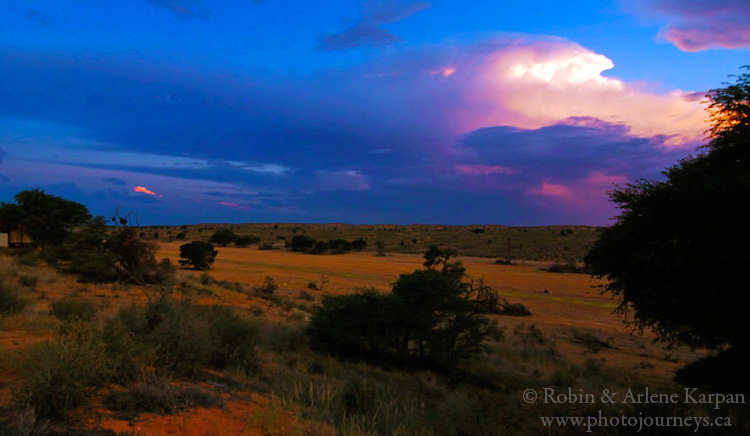
The next day things change quickly. We’re exploring about 20 kilometres out of Nossob rest camp on our afternoon drive. Low and fast-moving black thunderclouds appear all around. We waste no time in turning back towards camp, bouncing along the rough corrugated sand roads.
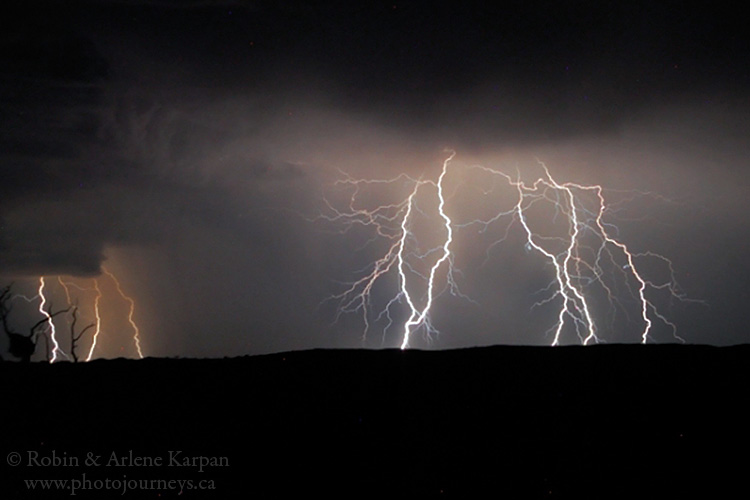
All at once the skies open up with a vengeance, rain pounding so hard that the windshield wipers can’t keep up. This isn’t a passing storm; it keeps hammering us, water suddenly flooding the normally dry riverbed. The road is nothing more than a graded trail in the sand, in most places lower than the adjoining terrain. In a matter of minutes, water pours into the road like floodgates had been opened. The road’s sandy banks quickly break down. It’s a no-win situation – we’re afraid to stop and risk getting inundated or stuck, and afraid to keep going because we can’t see what’s ahead.
Just as things were getting desperate, we spot a slight rise in this mostly flat land. We decide to wait it out on this tiny island in an ever-expanding lake. Before long, a four-wheel-drive truck comes from behind and pulls up alongside. It’s Andrew and Lucy, a couple from Johannesburg we had met from time to time in our travels around the park. We seriously discuss abandoning our small Toyota Corolla, getting a ride to camp with them, then coming back for the car the next day. But by now, the rain begins to subside somewhat, so we carry on, following closely behind their truck.
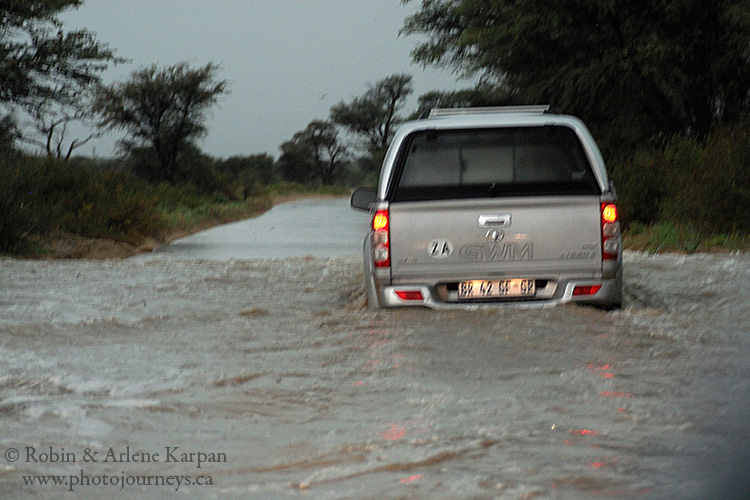
Although the rain lessens, the flow of water into the road becomes heavier. Now we’re literally pushing water, the muddy spray splashing high over the top of the hood. Staying immediately behind the truck proves to be a big help, since the truck pushes the water to the side, allowing us to drive in its wake.
Amazingly, we keep moving, thanks in part to these rough roads. We’re no longer cursing those bone-wrenching corrugations; they now provide just enough grip to keep going. Any minute we expect the engine to stop, since the spark plugs and wiring are undoubtedly wet. Our decision to keep moving instead of leaving the car on the high spot looks less and less like the right choice. If the car stalls, and is left sitting in deep water, things will get messy. We can imagine the questions at the car rental company (“You were driving where?”). Yet somehow, we make it back to camp.
“A few times when I looked back, I could see the water coming over the bonnet,” says Andrew as we arrive. “The headlights would flicker on and off as they shorted out.”
A Desert Transformed
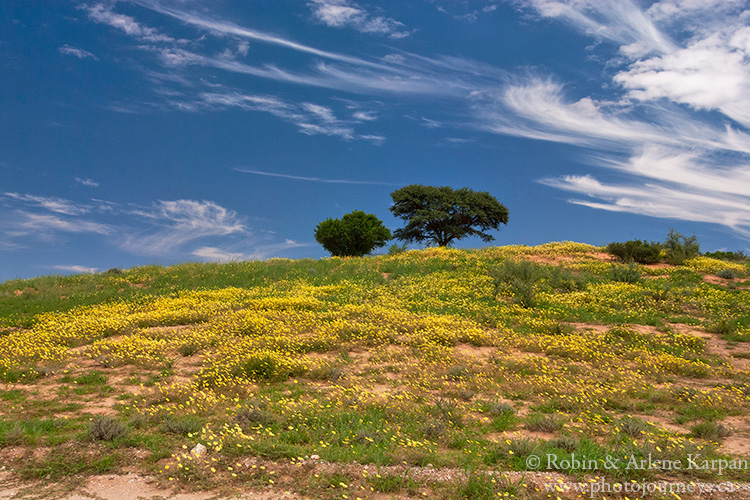
The storm passes in the evening and the next day brings a magical transformation to the desert. Grey-looking shrubs wilting in the heat turn brilliant green. Devil’s thorn, a low creeping plant with showy yellow flowers, covers sandy slopes in carpets of lemon. Trumpet-shaped red flowers of devil’s claw, tall pink cat’s tail, and bouquet-like clusters of pinkish narine add to the blooming bounty. It seems fitting that some flowers have stormy names – thunderbolt, a tall plant with dark purple flowers; or black storm, its bright yellow blossoms looking like candles stuck in the sand. The extraordinary parade of colour is set against fiery red dunes and a deep blue sky.
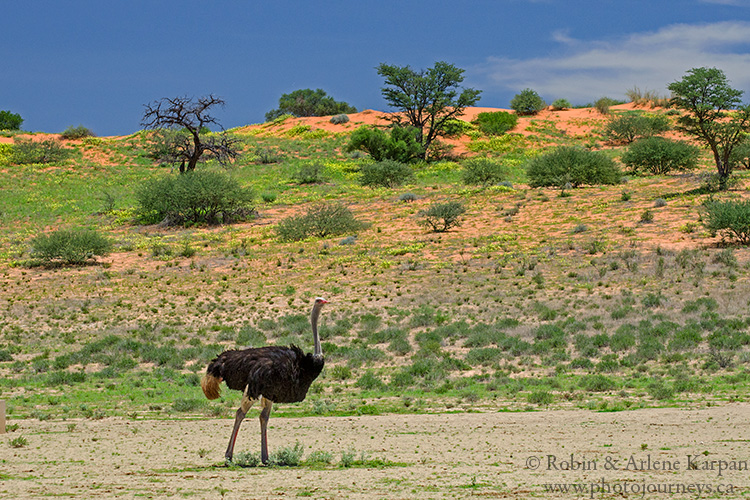
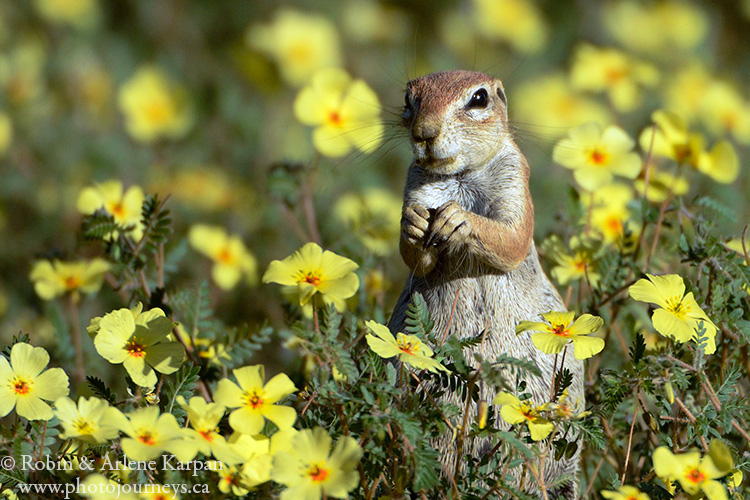
We’ve come to the Kalahari for the wildlife, which certainly doesn’t disappoint. But what we’ll remember most is the larger experience of wandering through this enchanting, stunning, and savage land. A land of surprises, where we find magnificent wildflower displays in pure sand, and experience the worst rainstorm of our lives in the middle of a desert.
Feel free to PIN this article
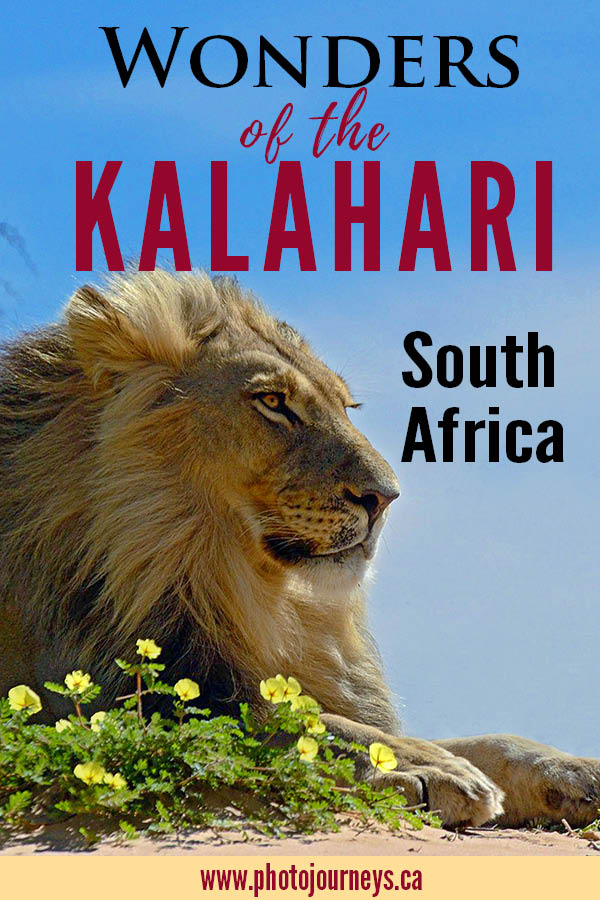


What stunning images – truly inspiring and I can’t wait to return to Africa!
Thanks Jenni. Yes, there is much to discover in Africa.
Fantastic images – truly inspiring and I can’t wait to return to Africa!